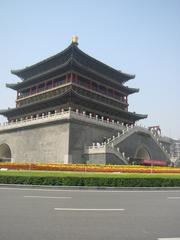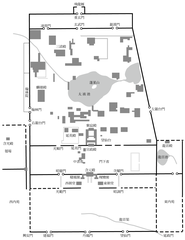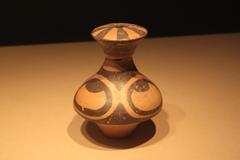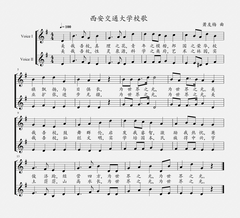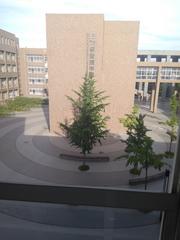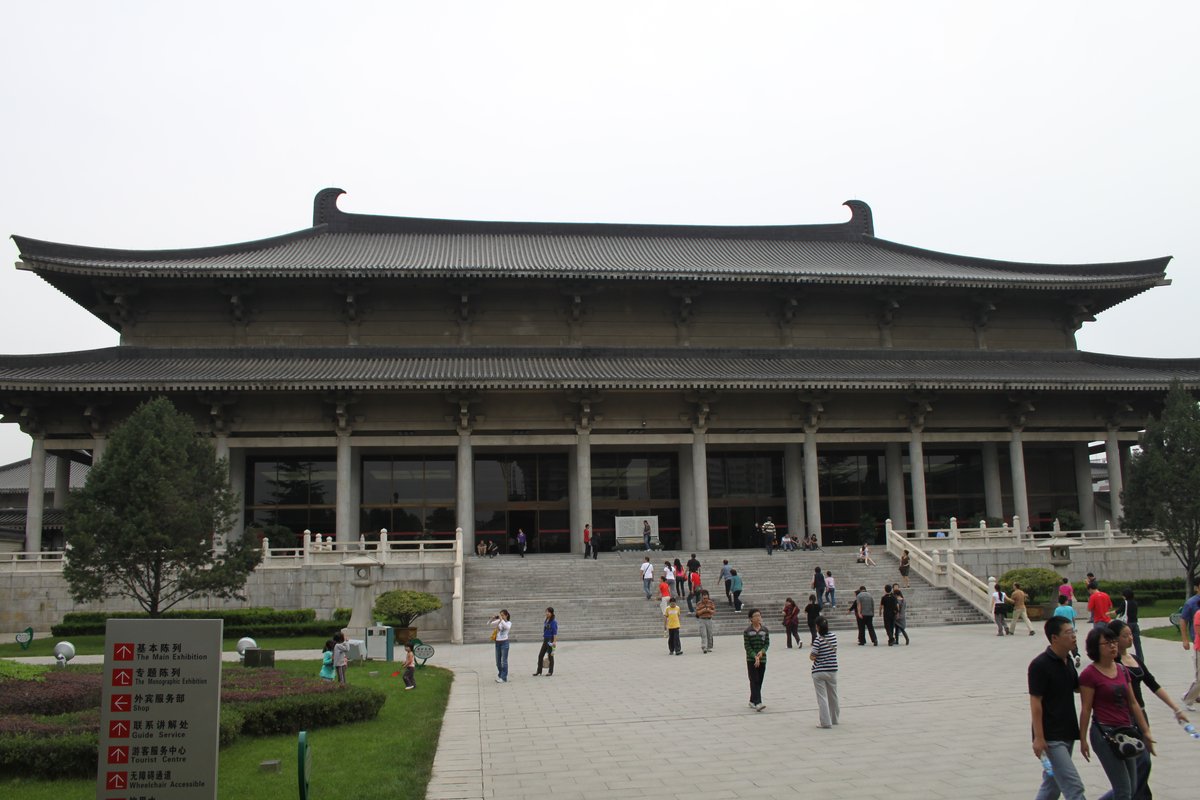
Visiting Hours and Tickets for Shaanxi History Museum in Xi’An
Date: 17/08/2024
Introduction
The Shaanxi History Museum in Xi’an stands as one of China’s most significant cultural institutions, offering a comprehensive glimpse into over a million years of the region’s history. As the first large-scale, modern, national-level museum in China, it has been instrumental in preserving and showcasing the rich historical and cultural heritage of Shaanxi Province since its official opening on June 20, 1991 (chinatripedia). The museum’s architectural design reflects the grandeur of the Tang Dynasty, harmoniously blending traditional Chinese and modern styles. Its extensive collection of over 1.7 million artifacts, including 18 national treasures, spans from prehistoric times to the Qing Dynasty, offering insights into the evolution of Chinese civilization across millennia.
From stone tools of the prehistoric era to the exquisite gold and silver artifacts from the Tang Dynasty, the museum’s permanent exhibitions are meticulously curated to provide a chronological journey through China’s history. Special exhibitions, such as the Treasures of the Great Tang Dynasty and the Exhibition Hall for Mural Paintings of the Tang Dynasty, further enrich the visitor experience by focusing on specific themes or periods (letstraveltochina).
Visiting the Shaanxi History Museum is not just about viewing artifacts; it is an educational and cultural experience. The museum offers guided tours, educational programs, and thematic tours that delve deeper into the historical periods and cultural exchanges that have shaped the region. Visitors can also explore nearby attractions like the Big Wild Goose Pagoda and Xi’an City Wall, making it a comprehensive cultural excursion (chinatripedia).
Table of Contents
- [Exploring the Shaanxi History Museum: Visiting Hours, Tickets, and Historical Significance](#exploring-the-shaanxi-history-museum-visiting-hours-tickets-and-historical-significanceexploring-the-shaanxi-history-museum-visiting-hours-tickets-and-historical-significance)
- [Origins and Construction](#origins-and-constructionorigins-and-construction)
- [Architectural Design](#architectural-designarchitectural-design)
- [Collection and Exhibits](#collection-and-exhibitscollection-and-exhibits)
- [Permanent Exhibitions](#permanent-exhibitionspermanent-exhibitions)
- [Prehistoric Era](#prehistoric-eraprehistoric-era)
- [Bronze Age](#bronze-agebronze-age)
- [Qin and Han Dynasties](#qin-and-han-dynastiesqin-and-han-dynasties)
- [Sui and Tang Dynasties](#sui-and-tang-dynastiessui-and-tang-dynasties)
- [Song, Yuan, Ming, and Qing Dynasties](#song-yuan-ming-and-qing-dynastiessong-yuan-ming-and-qing-dynasties)
- [Special Exhibitions](#special-exhibitionsspecial-exhibitions)
- [Treasures of the Great Tang Dynasty](#treasures-of-the-great-tang-dynastytreasures-of-the-great-tang-dynasty)
- [Exhibition Hall for Mural Paintings of the Tang Dynasty](#exhibition-hall-for-mural-paintings-of-the-tang-dynastyexhibition-hall-for-mural-paintings-of-the-tang-dynasty)
- [Horse Culture Display](#horse-culture-displayhorse-culture-display)
- [Permanent Exhibitions](#permanent-exhibitionspermanent-exhibitions)
- [Visiting Hours and Ticket Information](#visiting-hours-and-ticket-informationvisiting-hours-and-ticket-information)
- [Cultural and Educational Significance](#cultural-and-educational-significancecultural-and-educational-significance)
- [Guided Tours](#guided-toursguided-tours)
- [Educational Programs](#educational-programseducational-programs)
- [Visitor Tips](#visitor-tipsvisitor-tips)
- [Accessibility and Transportation](#accessibility-and-transportationaccessibility-and-transportation)
- [Nearby Attractions and Travel Tips](#nearby-attractions-and-travel-tipsnearby-attractions-and-travel-tips)
- [Special Events and Photographic Spots](#special-events-and-photographic-spotsspecial-events-and-photographic-spots)
- [Frequently Asked Questions (FAQ)](#frequently-asked-questions-faqfrequently-asked-questions-faq)
- [Explore Shaanxi History Museum: Exhibitions, Tickets, and Visiting Hours](#explore-shaanxi-history-museum-exhibitions-tickets-and-visiting-hoursexplore-shaanxi-history-museum-exhibitions-tickets-and-visiting-hours)
- [Introduction](#introductionintroduction)
- [Permanent Exhibitions](#permanent-exhibitionspermanent-exhibitions-1)
- [Ancient Civilization of Shaanxi](#ancient-civilization-of-shaanxiancient-civilization-of-shaanxi)
- [Zhou, Qin, Han, and Tang Dynasties](#zhou-qin-han-and-tang-dynastieszhou-qin-han-and-tang-dynasties)
- [Special Exhibitions](#special-exhibitionsspecial-exhibitions-1)
- [Tang Dynasty Murals](#tang-dynasty-muralstang-dynasty-murals)
- [Hejia Village Treasures](#hejia-village-treasureshejia-village-treasures)
- [Thematic Tours](#thematic-toursthematic-tours)
- [Qin and Han Civilizations](#qin-and-han-civilizationsqin-and-han-civilizations)
- [Silk Road and Cultural Exchange](#silk-road-and-cultural-exchangesilk-road-and-cultural-exchange)
- [Visitor Information](#visitor-informationvisitor-information)
- [Ticket Reservations](#ticket-reservationsticket-reservations)
- [Opening Hours](#opening-hoursopening-hours)
- [Accessibility and Amenities](#accessibility-and-amenitiesaccessibility-and-amenities)
- [Guided Tours and Additional Services](#guided-tours-and-additional-servicesguided-tours-and-additional-services)
- [Private VIP Tours](#private-vip-toursprivate-vip-tours)
- [Audio Guides](#audio-guidesaudio-guides)
- [Nearby Attractions](#nearby-attractionsnearby-attractions)
- [FAQ](#faqfaq-1)
- [Conclusion](#conclusionconclusion)
Exploring the Shaanxi History Museum: Visiting Hours, Tickets, and Historical Significance
Origins and Construction
The Shaanxi History Museum, located in Xi’an, China, is a premier institution dedicated to preserving and showcasing the rich historical and cultural heritage of the Shaanxi Province. The museum’s construction began in the summer of 1986 and it officially opened to the public on June 20, 1991. Covering an area of 65,000 square meters, with exhibition halls spanning 11,000 square meters, it stands as the first large-scale, modern, national-level museum in China (chinatripedia).
Architectural Design
The architectural design of the Shaanxi History Museum is a harmonious blend of traditional Chinese and modern styles. The museum’s layout is inspired by the Tang Dynasty’s architectural principles, reflecting the grandeur and elegance of that era. The main building features a central hall flanked by two wings, creating a symmetrical and balanced structure that is both aesthetically pleasing and functional.
Collection and Exhibits
The museum boasts a remarkable collection of over 1.7 million artifacts, including 762 first-tier cultural relics and 18 national treasures. Two of these items are among the first batch of artifacts restricted from being exhibited abroad, underscoring the museum’s significance in China’s cultural landscape (chinatripedia).
Permanent Exhibitions
The museum’s collection spans a vast timeline, starting from the simple stone tools used by early human ancestors and extending to a wide array of artifacts from pre-1840 Chinese society. This expansive collection covers over a million years of history, making it an essential destination for those interested in the rich history and culture of China (chinatripedia).
-
Prehistoric Era: The first exhibition hall provides a timeline of Shaanxi’s culture, starting from the Stone Age. This section includes tools, pottery, and other artifacts that offer insights into the daily lives and activities of early human societies in the region.
-
Bronze Age: The second exhibition hall showcases the development of bronze ware, highlighting the technological advancements and artistic achievements of ancient Chinese civilizations.
-
Qin and Han Dynasties: This section features artifacts from the Qin and Han Dynasties, including the famous Terracotta Warriors, which were buried alongside the first emperor of China, Qin Shi Huang, over 2,000 years ago (chinatripedia).
-
Sui and Tang Dynasties: The third exhibition hall is dedicated to the Sui and Tang Dynasties, showcasing a wide array of cultural treasures, including paintings, sculptures, and ceramics.
-
Song, Yuan, Ming, and Qing Dynasties: The final exhibition hall covers the Song, Yuan, Ming, and Qing Dynasties, providing a comprehensive overview of the cultural and historical developments during these periods.
Special Exhibitions
In addition to its permanent exhibitions, the Shaanxi History Museum also hosts several special exhibitions that focus on specific themes or periods in Chinese history.
-
Treasures of the Great Tang Dynasty: Located on the west side of the museum, this exhibition features over 300 selected artifacts primarily made of gold and silver from the more than 1,000 items unearthed from the Hejiacun tomb. These artifacts shine with brilliance and captivate visitors with their intricate designs and craftsmanship (letstraveltochina).
-
Exhibition Hall for Mural Paintings of the Tang Dynasty: The underground floor of the east exhibition hall houses this unique collection of nearly 600 exquisite murals from over 20 Tang Dynasty tombs. These murals offer a detailed portrayal of the customs, rituals, clothing, leisure activities, and architectural styles of the Tang Dynasty, providing invaluable insights into the social life and artistic achievements of the era (letstraveltochina).
-
Horse Culture Display: This exhibition is a collaborative effort between the Shaanxi History Museum and 14 cultural institutions from across China. It brings together over 150 exquisite artifacts related to horses from various dynastic periods, shedding light on the significant roles that horses played in ancient China, including in agriculture, daily life, transportation, military campaigns, and cultural expressions (chinatripedia).
Visiting Hours and Ticket Information
The Shaanxi History Museum is open from Tuesday to Sunday, 8:30 AM to 6:00 PM, with last admission at 5:00 PM. The museum is closed on Mondays, except for national holidays. Admission is free, but tickets are required. Visitors can obtain free tickets at the entrance or reserve them online in advance to avoid long queues. There are also paid special exhibition tickets, with prices varying depending on the exhibition (chinatripedia).
Cultural and Educational Significance
The Shaanxi History Museum is not only a repository of historical artifacts but also a center for cultural and educational activities. The museum offers a variety of educational programs, including guided tours, lectures, and workshops, aimed at enhancing public understanding and appreciation of China’s rich cultural heritage.
Guided Tours
It is highly recommended to hire a guide when visiting the museum, as simply viewing the exhibits may not fully convey the stories and values behind them. Guided tours provide in-depth explanations and contextual information, enriching the visitor experience (letstraveltochina).
Educational Programs
The museum also offers a range of educational programs for students and scholars, including research opportunities, internships, and collaborative projects with academic institutions. These programs aim to foster a deeper understanding of Chinese history and culture and to promote the preservation and study of cultural heritage.
Visitor Tips
To make the most of your visit to the Shaanxi History Museum, consider the following tips:
-
Timing: Visit the museum during off-peak hours, ideally between 12 PM to 2 PM when there are fewer visitors. This allows you to explore the exhibits more comfortably without the crowds. Avoid weekends if possible, as they tend to be more crowded (chinatripedia).
-
Security Check: Be prepared for security checks at the museum entrance. Lighters and other prohibited items are not allowed inside. However, the museum provides drinking water, so bring a water bottle or refillable container to stay hydrated during your visit (chinatripedia).
-
Comfort: If you’re visiting during spring or autumn, consider bringing a handheld fan. The museum doesn’t have air conditioning, and it can get quite crowded and stuffy, especially during peak hours. A fan can provide much-needed relief and make your visit more comfortable (chinatripedia).
-
Strategic Planning: If you’re short on time, prioritize visiting the Fourth Exhibition Hall and the Second and Third Exhibition Halls. The prehistoric section in the First Exhibition Hall is covered in most provincial museums and often has long queues. Focus on the sections with unique or particularly interesting exhibits to make the most of your visit (chinatripedia).
Accessibility and Transportation
The Shaanxi History Museum is situated in the southern suburb of Xi’an, near the Big Wild Goose Pagoda and the Small Wild Goose Pagoda. The specific address is 91 Xiaozhai East Road, Yanta District, Xi’an, Shaanxi Province, China.
By Bus
There are several bus stops around the museum, but the nearest one is called Shaanxi History Museum Stop (Shanxi lishi bowuguan 陕西历史博物馆). You can take bus No. 5, 19, 24, 26, 30, 34, 271, 400, 401, 521, 701, or 713 to get there, and once you get off, you will be right in front of the south gate (chinatripedia).
By Metro
Take subway line 1 or 2, get off at Xiaozhai Station, get out of the station from the northeast exit, and walk about 500 meters to the east to reach the south gate (chinatripedia).
Nearby Attractions and Travel Tips
While visiting the Shaanxi History Museum, consider exploring nearby attractions like the Big Wild Goose Pagoda, Small Wild Goose Pagoda, and the Xi’an City Wall. These sites offer additional insights into the historical and cultural landscape of Xi’an.
Special Events and Photographic Spots
Keep an eye out for special events hosted by the museum, such as cultural festivals, temporary exhibitions, and workshops. These events provide unique opportunities to engage with Chinese culture and history in a dynamic way. The museum also has several picturesque spots perfect for photography, particularly the central hall and the surrounding gardens.
Frequently Asked Questions (FAQ)
Q: What are the Shaanxi History Museum visiting hours?
A: The museum is open from Tuesday to Sunday, 8:30 AM to 6:00 PM, with last admission at 5:00 PM. It is closed on Mondays, except for national holidays.
Q: How much are the Shaanxi History Museum tickets?
A: Admission is free, but tickets are required. Visitors can obtain free tickets at the entrance or reserve them online in advance. Special exhibition tickets are paid, with prices varying by exhibition.
Q: What are some nearby historical sites in Xi’an?
A: Nearby attractions include the Big Wild Goose Pagoda, Small Wild Goose Pagoda, and the Xi’an City Wall.
Explore Shaanxi History Museum: Exhibitions, Tickets, and Visiting Hours
Introduction
The Shaanxi History Museum, located in Xi’an, is one of China’s most significant cultural institutions. Housing a vast collection of artifacts, the museum offers a deep dive into the rich history and culture of the Shaanxi province, spanning over a million years. This guide will help you navigate the museum’s extensive exhibitions, understand ticketing, and plan your visit effectively.
Permanent Exhibitions
Ancient Civilization of Shaanxi
The Shaanxi History Museum houses a comprehensive collection of artifacts that span over a million years, from the prehistoric era to the Qing Dynasty. The permanent exhibitions are divided into three main halls, each focusing on different historical periods and themes. The Ancient Civilization of Shaanxi exhibition showcases artifacts from the Paleolithic and Neolithic periods, including stone tools and pottery. This section provides a glimpse into early human activities in the region, highlighting the development of agriculture and the rise of early settlements.
Zhou, Qin, Han, and Tang Dynasties
The museum’s most extensive collection is dedicated to the Zhou, Qin, Han, and Tang dynasties, which are considered the golden ages of Chinese civilization. This exhibition includes a variety of artifacts such as bronze wares, jade pieces, and terracotta figures. Notable items include the Qi Ding and Wu Si Wei Ding, which are large bronze vessels used in ancient rituals (China Highlights). The Tang Dynasty section is particularly rich, featuring murals, pottery, and gold and silver objects that reflect the prosperity and cultural achievements of the era.
Special Exhibitions
Tang Dynasty Murals
One of the museum’s highlights is the Tang Dynasty Mural Hall, which requires a separate ticket priced at 270 yuan. This hall features over 600 square meters of murals that were excavated from the tombs of Tang Dynasty nobles. The murals depict various aspects of Tang society, including court life, religious practices, and daily activities. The preservation of these murals is a significant challenge, which is why the entrance fee is relatively high (Trip.com).
Hejia Village Treasures
Another special exhibition is the Hejia Village Treasures, located in the Treasure Hall. This exhibition showcases artifacts excavated from a Tang Dynasty cellar, including gold and silver wares, ceramics, and other valuable items. The entrance fee for this hall is 30 yuan. The treasures provide insights into the luxurious lifestyle of the Tang elite and the high level of craftsmanship achieved during this period (Tour-Beijing).
Thematic Tours
Qin and Han Civilizations
The museum offers thematic tours thatfocus on specific historical periods or themes. One of the most popular tours is the Qin and Han Civilizations tour, which explores the political unification and cultural developments during these dynasties. The tour includes a visit to the Qin and Han Gallery, which features artifacts such as terracotta warriors, bronze mirrors, and coins. This tour provides a comprehensive understanding of the social, political, and cultural transformations that occurred during these periods (Trip.com).
Silk Road and Cultural Exchange
Another thematic tour focuses on the Silk Road and Cultural Exchange. This tour highlights the role of Shaanxi as a crucial hub in the ancient Silk Road network. Artifacts on display include silk textiles, exotic goods, and items that reflect the cultural exchanges between China and other civilizations. The tour emphasizes the importance of trade and cultural interactions in shaping the history of Shaanxi and China as a whole (China Discovery).
Visitor Information
Ticket Reservations
Visitors are advised to book their tickets in advance, especially during peak seasons. Free tickets for the basic exhibition halls can be reserved on the museum’s official website or through its WeChat account. Tickets are released at specific times each day: 10:00, 11:00, 18:00, and 19:00. It is recommended to set an alarm and refresh the booking page frequently to secure a ticket (Trip.com).
Opening Hours
The museum operates on a seasonal schedule. From March 16 to November 14, it is open from 08:30 to 18:00, with the last admission at 16:30. From November 15 to March 15, the hours are 09:00 to 17:30, with the last admission at 16:00. The museum is closed on Mondays, except for national holidays (Tour-Beijing).
Accessibility and Amenities
The museum is accessible by various modes of transportation, including buses and the subway. Visitors can take bus routes 27, 527, 400, 30, 19, and 401, or subway lines 2, 3, and 4 to reach the museum. The museum provides free lockers for storing bags and backpacks, but laptops are not accepted. Cameras and phones are allowed, but flash photography is prohibited. The museum also has clean and convenient washrooms, and small shops selling souvenirs (Tour-Beijing).
Guided Tours and Additional Services
Private VIP Tours
For a more personalized experience, visitors can opt for private VIP tours. These tours offer a more in-depth exploration of the museum’s collections and are led by knowledgeable guides. The tours typically last for about four hours and can be customized to focus on specific interests or themes. The tours start from the visitor’s hotel and include transportation to and from the museum (Yonder Tours).
Audio Guides
Audio guides are available for rent at the museum for 30 yuan. However, some visitors have found the audio guides to be confusing and not comprehensive. It is recommended to hire a human guide for a more informative and engaging experience (Trip.com).
Nearby Attractions
After visiting the Shaanxi History Museum, consider exploring other nearby attractions in Xi’an, such as the Ancient City Wall, the Big Wild Goose Pagoda, and the Muslim Quarter. Each of these sites offers a unique glimpse into the historical and cultural diversity of the region.
FAQ
Q: What are the visiting hours for Shaanxi History Museum?
A: From March 16 to November 14, the museum is open from 08:30 to 18:00, with the last admission at 16:30. From November 15 to March 15, the hours are 09:00 to 17:30, with the last admission at 16:00. The museum is closed on Mondays, except for national holidays.
Q: How do I book tickets for Shaanxi History Museum?
A: Tickets can be reserved on the museum’s official website or through its WeChat account. Tickets are released at specific times each day: 10:00, 11:00, 18:00, and 19:00.
Q: Are there any special exhibitions at the Shaanxi History Museum?
A: Yes, the museum has special exhibitions like the Tang Dynasty Mural Hall and the Hejia Village Treasures. These exhibitions require separate tickets.
Conclusion
By exploring the diverse exhibitions and thematic tours offered at the Shaanxi History Museum, visitors can gain a deeper understanding of China’s rich cultural heritage and the historical significance of the Shaanxi province. Plan your visit today to experience the wonders of this incredible museum. Don’t forget to check out related posts and follow us on social media for more updates.
References
- chinatripedia. (n.d.). Shaanxi History Museum: Tickets, Opening Hours, Highlights, and Tips. chinatripedia
- letstraveltochina. (n.d.). Things to do in Xi’an, China. letstraveltochina
- China Highlights. (n.d.). Shaanxi History Museum. China Highlights
- Trip.com. (n.d.). Shaanxi History Museum Moments. Trip.com
- Tour-Beijing. (n.d.). How to Visit Shaanxi History Museum. Tour-Beijing
- China Discovery. (n.d.). Shaanxi History Museum. China Discovery
- Yonder Tours. (n.d.). 4-Hour Private VIP Tour of Shaanxi History Museum and Xi’an Museum. Yonder Tours




